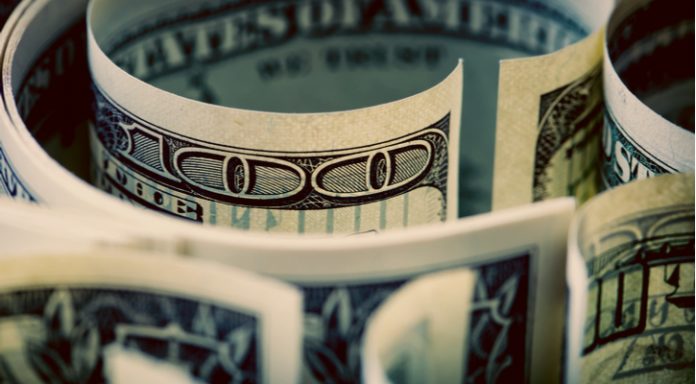The US Democrats flipped the House of Representatives in the US midterm elections, sending the dollar lower versus the pound. The pound US dollar exchange rate rallied for the fourth straight session on Wednesday. The pair hit a peak of US$1.3176, its highest level in 3 weeks.
| What do these figures mean? |
|---|
| When measuring the value of a pair of currencies, one set equals 1 unit and the other shows the current equivalent. As the market moves, the amount will vary from minute to minute.For example, it could be written:1 GBP = 1.28934 USDHere, £1 is equivalent to approximately $1.29. This specifically measures the pound’s worth against the dollar. If the US dollar amount increases in this pairing, it’s positive for the pound. Or, if you were looking at it the other way around:1 USD = 0.77786 GBPIn this example, $1 is equivalent to approximately £0.78. This measures the US dollar’s worth versus the British pound. If the sterling number gets larger, it’s good news for the dollar. |
The pound continued to strengthen on Wednesday as Brexit optimism and stronger housing data boosted the mod towards the pound. Rumours are flying that the UK Prime Minister is just days away from agreeing a deal on Brexit. Despite the PM and EU Chief Negotiator insisting that there’s still a lot of work to be done, the rumours are not dying down. Leading economists and business leaders have regularly stated how damaging a no deal Brexit will be to the UK economy. Therefore, any signs of a deal lift the pound.
| Why is a “soft” Brexit better for sterling than a “hard” Brexit? |
|---|
| A soft Brexit implies anything less than UK’s complete withdrawal from the EU. For example, it could mean the UK retains some form of membership to the European Union single market in exchange for some free movement of people, i.e. immigration. This is considered more positive than a “hard” Brexit, which is a full severance from the EU. The reason “soft” is considered more pound-friendly is because the economic impact would be lower. If there is less negative impact on the economy, foreign investors will continue to invest in the UK. As investment requires local currency, this increased demand for the pound then boosts its value. |
UK housing data from Halifax also offered support to the pound. The data showed that housing prices picked up by more than what analysts had been expecting in October, even though this is still at a 5 year low. Whilst pound traders aren’t directly interested in house prices, signs that UK consumers are willing to spend more than analysts had predicted are encouraging for the economy.
Today with a light economic calendar, Brexit will once again remain the key driver.
Fed To Keep Rates On Hold
As analysts had predicted, the Democrats won sufficient seats in the US midterm elections to take the House of Representatives from the Republicans. The Republicans managed to retain power in the Senate. A divided government means that the next two years will be characterised by political gridlock. It’s highly unlikely that more expansionary fiscal policies that were responsible for increasing inflationary pressures, will be passed. As a result, the dollar sold off.
Investors will now focus on the Federal Reserve monetary policy decision today. Analysts are not expecting the Fed to raise interest rates at this meeting. They’re expecting the Fed to continue pointing towards an interest rate rise in December. The change in Congress should not impact on the Fed’s decision to hike next month. Investors will be paying particular attention to the Fed’s plans for next year. The US economy continues to show strength through strong economic data releases, although that strength has eased slightly this month Should the Fed show a more dovish tone in the statement today, the dollar could slip lower
| Why do raised interest rates boost a currency’s value? |
|---|
| Interest rates are key to understanding exchange rate movements. Those who have large sums of money to invest want the highest return on their investments. Higher interest rate environments tend to offer higher yields. So, if the interest rate or at least the interest rate expectation of a country is relatively higher compared to another, then it attracts more foreign capital investment. Large corporations and investors need local currency to invest. More local currency used then boosts the demand of that currency, pushing the value higher. |
This publication is provided for general information purposes only and is not intended to cover every aspect of the topics with which it deals. It is not intended to amount to advice on which you should rely. You must obtain professional or specialist advice before taking, or refraining from, any action on the basis of the content in this publication. The information in this publication does not constitute legal, tax or other professional advice from TransferWise Inc., Currency Live or its affiliates. Prior results do not guarantee a similar outcome. We make no representations, warranties or guarantees, whether express or implied, that the content in the publication is accurate, complete or up to date. Consult our risk warning page for more details.
This article was initially published on TransferWise.com from the same author. The content at Currency Live is the sole opinion of the authors and in no way reflects the views of TransferWise Inc.





